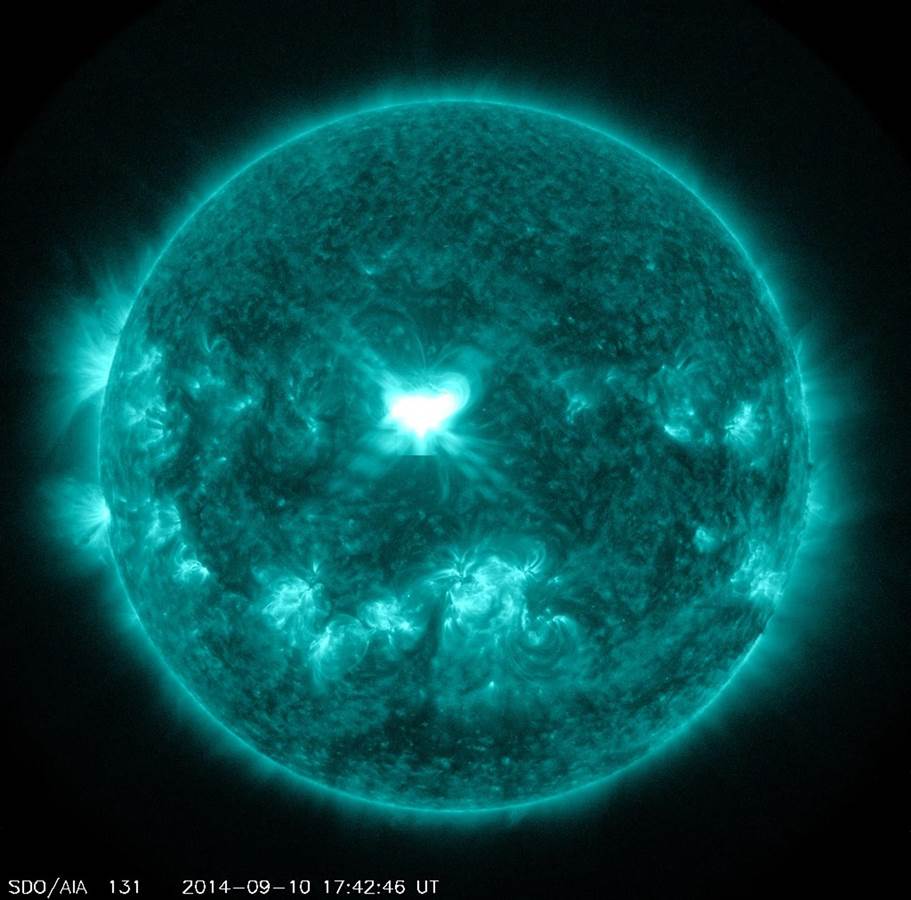

The sun has been regurgitating a lot of solar flares these days, and now, a couple will be knocking at Earth’s door this weekend.
The originator of these flares is a particularly complex sunspot called AR2518, which is currently facing our planet. Late Monday night, the spot produced a minor solar flare (class R1) that lasted for six hours, but then on Wednesday at 1:45 p.m. EST, it upchucked a whopping X1.6-class solar flare, which is pretty darn strong.
Both flares have launched large outbursts of magnetic fields, known as coronal mass ejections – or CMEs – at high velocity straight toward Earth, according to NOAA’s Space Weather Prediction Center. The CME associated with Monday’s flare is expected to hit tonight, while the more intense CME is expected to arrive Friday afternoon to evening. Earth experiences CMEs all the time without issue, but if they’re strong enough, CMEs can cause geomagnetic storms and sometimes, extreme radio blackouts.
Although Wednesday’s solar flare was somewhat strong, the magnitudes of these incoming CMEs aren’t that intense, historically speaking. What makes the event so unique, however, is that Earth will experience two CMEs in close succession to one another – a situation that is pretty rare. That means scientists are being cautious about what to expect. “The two CMEs could be interacting on their way to Earth’s orbit, or beyond Earth’s orbit,” says Thomas Berger, director of the Space Weather Prediction Center, meaning the flares could potentially amplify each other in some way.
Ultimately, no one really knows how these storms will impact each other. Given this uncertainty, NOAA has issued a moderate to strong G3 geomagnetic storm watch for Friday. The rating indicates that the incoming magnetic fields may cause some problems with radio communications, as well as voltage irregularities in northern latitudes of the United States. Grid operators and even FEMA have been notified, just in case.
Fortunately, NOAA doesn’t expect the impacts of the CMEs to be unmanageable. “There’s really no concern for electronics down here on the ground,” says William Murtagh, program coordinator, Space Weather Prediction Center. Murtagh notes that some studies have implied electronics at higher altitudes, such as planes flying near the poles, are more vulnerable to geomagnetic storms, but that hasn’t been verified.
Still, they’ll be watching the events closely. Additionally, Wednesday’s eruption also produced an Earth-bound solar radiation storm, but that has only amounted to an S1 rating (the lowest on the NOAA scale). When solar radiation storms reach a level of S3 or above, NOAA will advise the FAA to start rerouting flights away from the poles to avoid radiation exposure. NASA mission control will also direct astronauts into more hardened portions of the International Space Station.
Meanwhile, there is one pretty awesome byproduct of these two solar flares. The storms could produce some pretty intense auroras, which may be visible in northern parts of the United States tonight and tomorrow. So if you living in Maine or the Dakotas (or even New York), make sure you have your camera handy. Chances are your DSLR will work just fine.
